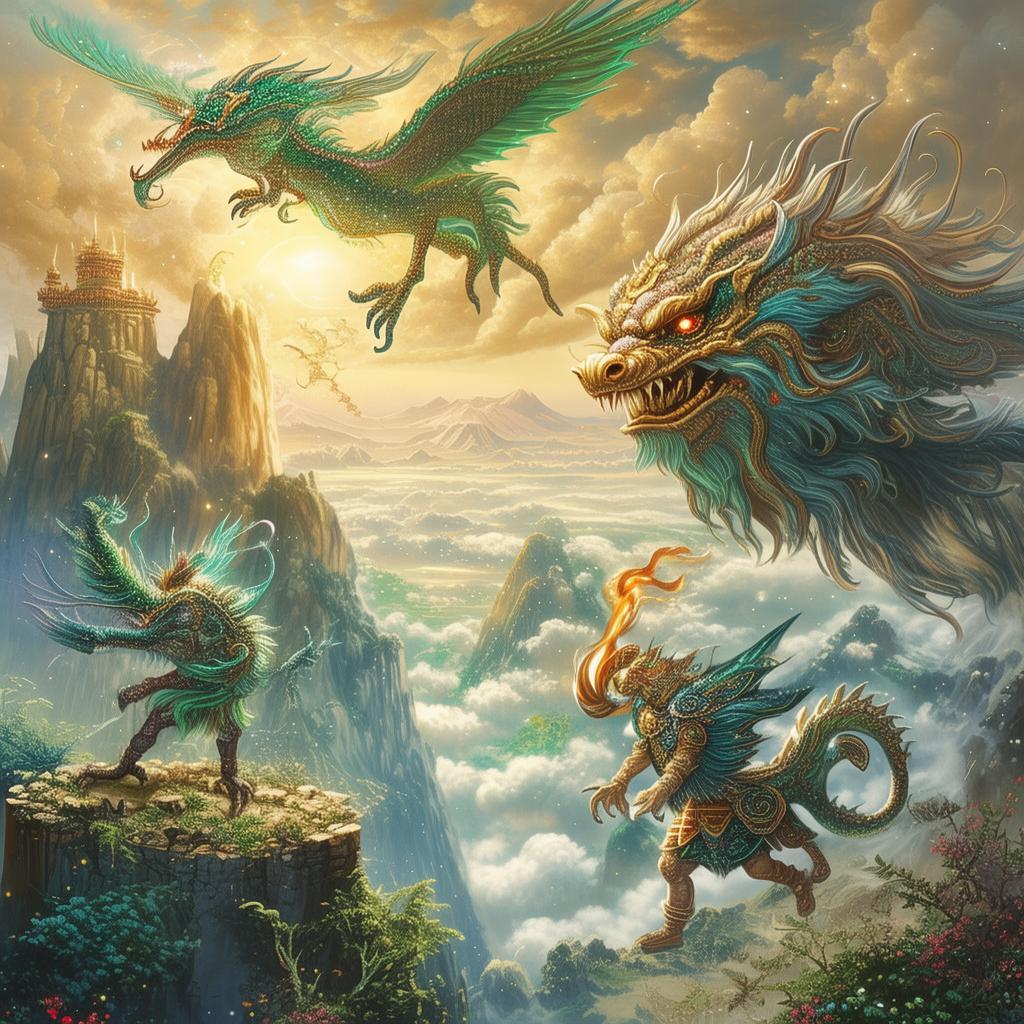Whispers of the Dancer's Lament
In the shattered remnants of what once was the world, where the sun barely dared to pierce the perpetual gloom, there existed a society that danced for life. The Dancer's Dystopia was a place where the ancient dances were not mere entertainment but a means of survival. Every movement, every beat of the heart synchronized with the rhythm of the world itself, and those who could dance well enough were revered.
Amara, a young and exceptionally talented dancer, was among the elite. Her movements were as fluid as the whispers of the wind, and her heart danced to a rhythm that seemed to resonate with the very essence of the world. Yet, beneath the surface of her serene existence, a storm brewed.
The story began in the grand hall of the Dancer's Academy, a place where the most skilled dancers gathered to perform. The air was thick with anticipation as the grand competition loomed, the winner to be chosen as the Dancer of the Year, a title that came with immense power and influence in the dystopian society.
Amara stood amidst her peers, her gaze fixed on the stage where the competition was to begin. She felt the familiar thrill of competition course through her veins, but something was different this time. A sense of foreboding hung in the air, a silent warning that something ominous was about to unfold.
The competition began with a series of intricate dances, each performed with the grace and precision that was the hallmark of the Dancer's Dystopia. Amara watched, her heart pounding, as her peers took to the stage with a fervor that was almost palpable. But it was not until the final round that the gravity of the situation truly hit her.

The final competitor was a dancer known as Elara, whose reputation preceded her. She was the daughter of the most powerful figure in the dystopian society, a man who held the strings of power with an iron fist. Amara had always admired Elara's skill but felt a deep sense of unease around her.
As Elara stepped onto the stage, her presence was commanding, her movements precise. She danced with a confidence that was both exhilarating and terrifying. Amara felt her own heart begin to race, a mix of fear and admiration. The audience was captivated, and the tension was almost tangible.
It was then that Elara performed a dance that was unlike anything Amara had ever seen. The dance was a powerful blend of ancient moves, each one telling a story of its own. Amara watched, her eyes wide with awe and disbelief. The dance was a testament to Elara's connection to the world, to the ancient dances that were the lifeblood of their society.
But as the dance reached its climax, something happened. The world around them seemed to shift, as if the very fabric of reality was being pulled apart. Amara felt a strange sensation, as if the rhythm of the world itself was changing, becoming faster, more intense. She looked at Elara, whose eyes were now filled with a strange, otherworldly light.
Suddenly, the ground beneath their feet began to tremble, and a roar echoed through the hall. Amara turned to see the walls crumbling, and the ceiling caving in. She turned back to Elara, who was now standing alone on the stage, her dance now a beacon of hope in the chaos.
"Amara," Elara whispered, her voice filled with urgency, "run. The dance is not just for us. It is for the world."
Before Amara could react, Elara's dance intensified, and the world seemed to respond. The crumbling walls stopped their descent, and the ceiling stabilized. Amara realized that Elara's dance was not just a performance but a call to action, a message that the ancient dances were more than just a means of survival—they were a lifeline for the world.
With a newfound determination, Amara left the hall and began to spread the word. She traveled through the dystopian society, teaching the ancient dances to those who were willing to learn. She found allies in the most unexpected places, and together, they fought against the oppressive regime that sought to suppress the power of the dances.
As Amara's influence grew, so too did the resistance. The dance became a symbol of hope, a way to connect with the world and each other. And in the heart of the dystopian society, a young dancer named Amara became a legend, her movements a testament to the resilience of the human spirit.
In the end, it was not just the dances that saved the world—it was the courage of a young dancer who believed that even in the darkest times, there was always hope.
✨ Original Statement ✨
All articles published on this website (including but not limited to text, images, videos, and other content) are original or authorized for reposting and are protected by relevant laws. Without the explicit written permission of this website, no individual or organization may copy, modify, repost, or use the content for commercial purposes.
If you need to quote or cooperate, please contact this site for authorization. We reserve the right to pursue legal responsibility for any unauthorized use.
Hereby declared.









